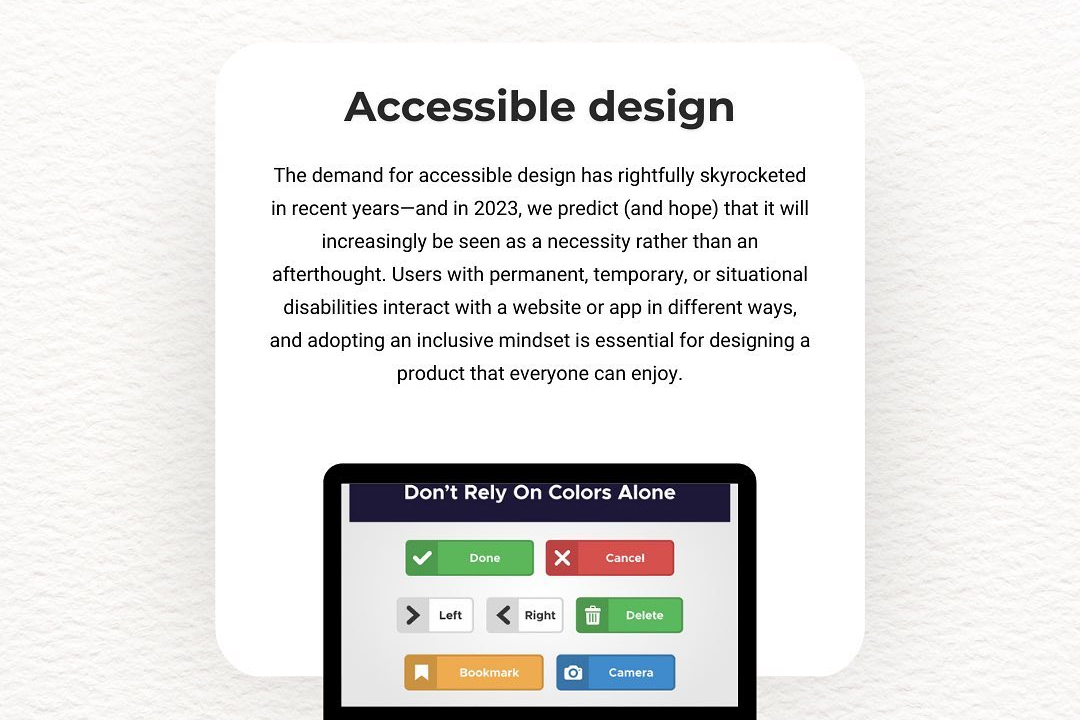How Can Run Php Program
Running a PHP program involves writing PHP code in a file with a .php extension and then executing i
How Can Run Php Program
Running PHP programs enables developers to create dynamic and interactive websites by executing server-side scripts that generate customized content tailored to user needs. PHP is widely supported on web servers, making it easy to develop, test, and deploy web applications efficiently. Its ability to interact with databases, handle form submissions, and manage sessions makes it an essential tool for building scalable, feature-rich websites. By executing PHP code on the server, businesses and developers can deliver real-time, personalized user experiences that enhance engagement and improve functionality.
To Download Our Brochure: https://www.justacademy.co/download-brochure-for-free
Message us for more information: +91 9987184296
Running PHP programs enables developers to create dynamic and interactive websites by executing server side scripts that generate customized content tailored to user needs. PHP is widely supported on web servers, making it easy to develop, test, and deploy web applications efficiently. Its ability to interact with databases, handle form submissions, and manage sessions makes it an essential tool for building scalable, feature rich websites. By executing PHP code on the server, businesses and developers can deliver real time, personalized user experiences that enhance engagement and improve functionality.
Course Overview
The “How to Run PHP Program” course teaches foundational skills to execute PHP scripts effectively, covering setup, code writing, and execution methods to develop dynamic web applications efficiently.
Course Description
Learn how to set up, write, and run PHP programs seamlessly to build dynamic web applications efficiently.
Key Features
1 - Comprehensive Tool Coverage: Provides hands-on training with a range of industry-standard testing tools, including Selenium, JIRA, LoadRunner, and TestRail.
2) Practical Exercises: Features real-world exercises and case studies to apply tools in various testing scenarios.
3) Interactive Learning: Includes interactive sessions with industry experts for personalized feedback and guidance.
4) Detailed Tutorials: Offers extensive tutorials and documentation on tool functionalities and best practices.
5) Advanced Techniques: Covers both fundamental and advanced techniques for using testing tools effectively.
6) Data Visualization: Integrates tools for visualizing test metrics and results, enhancing data interpretation and decision-making.
7) Tool Integration: Teaches how to integrate testing tools into the software development lifecycle for streamlined workflows.
8) Project-Based Learning: Focuses on project-based learning to build practical skills and create a portfolio of completed tasks.
9) Career Support: Provides resources and support for applying learned skills to real-world job scenarios, including resume building and interview preparation.
10) Up-to-Date Content: Ensures that course materials reflect the latest industry standards and tool updates.
Benefits of taking our course
Functional Tools
1 - XAMPP: XAMPP is a free and open source cross platform web server solution stack package. It includes Apache HTTP Server, MariaDB database, and interpreters for scripts written in PHP and Perl. For students learning to run PHP programs locally, XAMPP simplifies the setup process by providing an all in one package that can be installed quickly on Windows, Linux, or Mac OS. It creates a local server environment where students can write, test, and debug PHP scripts without the need for internet hosting. This tool is vital in understanding how PHP interacts with web servers and databases in a controlled environment, making it easier for students to grasp core concepts and troubleshoot issues effectively.
2) WAMP Server: An acronym for Windows, Apache, MySQL, and PHP, WAMP Server is a Windows based web development platform. It provides a graphical interface to manage the server components, start or stop services, and configure settings. Using WAMP, students can set up a local server environment specifically tailored for PHP development. It supports quick testing of these scripts in a safe, local environment before deploying them on live servers. The user friendly interface makes it suitable for beginners to learn how PHP interacts with server components, facilitating a seamless learning experience in understanding server configurations and PHP execution.
3) LAMP Stack: The Linux, Apache, MySQL, PHP (LAMP) stack is a popular open source software bundle used primarily in Linux environments. It provides a robust platform to develop, run, and test PHP applications. For students working on Linux systems or exploring cross platform development, understanding the LAMP stack is essential. It allows them to set up a real world server environment, giving insights into the deployment process of PHP on production servers. Learning to configure and run PHP programs on LAMP prepares students for enterprise level application deployment and server management in professional settings.
4) Integrated Development Environments (IDEs): Tools such as PHPStorm, Visual Studio Code, and Sublime Text facilitate writing, debugging, and managing PHP code efficiently. These IDEs offer features like syntax highlighting, code auto completion, real time error detection, and integrated terminal access. Teaching students to use IDEs enhances their productivity and coding accuracy when developing PHP programs. They also provide debugging tools that make troubleshooting easier, which is crucial for resolving runtime errors or logical bugs during program execution.
5) Command Line Interface (CLI): PHP can be executed directly from the command line, which provides an efficient way to run PHP scripts without needing a web server setup. Learning to use CLI tools helps students understand how PHP scripts execute outside of web browsers, useful in scripting, automation, or server management tasks. The command line interface also aids in debugging scripts quickly and running batch processes or scheduled tasks, broadening understanding of PHP's versatility in different operational contexts.
6) Text Editors: Simple text editors like Notepad++ or advanced ones like Atom are essential tools for writing PHP code, especially for beginners. They support syntax highlighting, line numbering, and easy file management, making code writing more organized and accessible. These editors serve as a lightweight alternative to full fledged IDEs for quick testing and editing scripts. They help students focus on fundamental coding concepts before moving on to more complex development environments.
7) Database Management Tools: phpMyAdmin is a widely used web based tool that simplifies database management when working with PHP applications dependent on databases like MySQL or MariaDB. It allows students to create, modify, and manage databases, tables, and entries visually, without command line complexities. Understanding database integration through tools like phpMyAdmin is vital for developing dynamic PHP programs that interact with persistent storage, thereby enhancing their full stack development skills.
8) Browser Developer Tools: Modern web browsers like Chrome, Firefox, or Edge come equipped with developer tools that help students inspect and debug web pages running PHP scripts. They can observe HTTP requests, view server responses, and analyze page loading issues. These tools are valuable for understanding how PHP generated content appears and functions within a web interface, bridging the gap between server side code and frontend display, which is crucial for building responsive and efficient web applications.
9) Version Control Systems: Platforms such as Git facilitate tracking changes, collaborating with peers, and managing different versions of PHP projects. Introducing version control tools encourages best practices in coding, documentation, and project management. Students learn how to maintain snapshots of their work, revert to previous states if needed, and collaborate seamlessly in team environments, which are essential skills in professional development.
10) Testing Tools: Automated testing frameworks like PHPUnit provide a framework for writing and executing unit tests on PHP code. They help ensure code quality, reduce bugs, and streamline debugging processes. Teaching students how to use testing tools develops a disciplined approach to development, promoting writing maintainable and reliable code, which is vital for professional software development processes.
11 - Package Managers: Composer is a dependency manager for PHP that simplifies integration of third party libraries and frameworks. It manages project dependencies efficiently, ensuring compatibility and version control. Introducing students to Composer helps them understand how to build scalable and modular PHP applications, saving development time and enhancing functionality.
12) Cloud Hosting Platforms: Services like AWS, Heroku, or DigitalOcean provide environments to deploy PHP applications publicly or privately. Familiarity with cloud platforms prepares students for real world deployment scenarios, allowing them to host, scale, and manage PHP programs in production environments. These tools also support learning about server provisioning, security configurations, and uptime management for live applications.
13) FTP Clients: Software such as FileZilla enables students to upload their PHP project files to web servers easily. FTP clients are essential for deploying PHP applications onto remote servers for testing or production. Using FTP tools helps students understand the deployment process and manage server files securely, which is a vital step in releasing PHP based web projects.
14) Debugging Tools: Xdebug provides advanced debugging capabilities for PHP by offering insights like variable inspection, stack traces, and breakpoints. It integrates with IDEs to facilitate in depth troubleshooting during development. Learning how to use debugging tools like Xdebug enhances students’ problem solving skills and reduces time spent fixing bugs in complex PHP applications.
15) Learning Management and Documentation Tools: Platforms like GitHub Pages or markdown editors assist students in documenting their projects, creating tutorials, and sharing their work with a broader audience. Documenting code and processes is a crucial part of software development, and these tools support effective communication and project management.
These tools collectively provide a comprehensive foundation for students to understand, develop, test, and deploy PHP programs efficiently, equipping them with the technical expertise necessary for a successful career in web development.
16) Docker Containers: Docker allows students to create isolated, reproducible development environments for PHP projects. By containerizing applications, students can avoid environment conflicts, ensure consistency across different systems, and streamline deployment processes. Learning Docker enhances their skills in modern DevOps practices, making their development workflows more scalable and reliable.
17) API Testing Tools: Postman and Insomnia are popular tools used to test APIs that PHP applications often interact with. These platforms enable students to send requests, inspect responses, and automate testing workflows. Mastering API testing is crucial for developing complex web applications that rely on third party services or microservices architecture.
18) Security Testing Tools: Tools like OWASP ZAP or Burp Suite assist students in identifying vulnerabilities within their PHP applications. Incorporating security testing into the development cycle helps students understand common web threats like SQL injection, cross site scripting (XSS), and session hijacking, promoting safer and more secure coding practices.
19) Performance Monitoring Tools: New Relic or Google Lighthouse provide insights into how PHP applications perform under load. These tools help students optimize code, reduce load times, and improve user experience. Understanding performance metrics is essential for building scalable web applications in real world scenarios.
20) Code Review Platforms: Platforms such as GitHub or GitLab facilitate collaborative code reviews, peer feedback, and version management. Engaging in code review practices helps students develop critical thinking skills, improve code quality, and adopt industry standard workflows for team projects.
21 - Continuous Integration (CI) Tools: Jenkins, Travis CI, or GitHub Actions automate the process of building, testing, and deploying PHP code upon each update. Implementing CI practices ensures rapid feedback, reduces integration issues, and promotes disciplined development habits necessary for professional software projects.
22) Static Code Analyzers: Tools like PHPStan or Psalm analyze PHP code for potential errors, type issues, and coding standard violations before runtime. Educating students on static analysis helps them write cleaner, more maintainable code, and catch bugs early in the development process.
23) Code Formatters and Linters: PHP_CodeSniffer and Prettier enforce coding standards and style consistency across projects. Adopting these tools encourages best practices, improving readability and reducing merge conflicts within collaborative teams.
24) Learning Management System Integrations: Using platforms like Moodle or Canvas, JustAcademy can offer integrated courses, assessments, and certifications, providing students a seamless learning journey with access to resources, quizzes, and progress tracking.
25) Web Application Firewalls (WAF): Tools like ModSecurity help students understand web security by configuring and testing protections against common threats. Learning about WAFs prepares students for implementing security measures in production environments.
26) Server Automation Tools: Ansible or Puppet enable automation of server provisioning and configuration management. These tools introduce students to infrastructure as code, essential for deploying PHP applications across multiple environments efficiently.
27) Analytics and User Tracking Tools: Google Analytics or Matomo provide insights into user interactions with PHP powered websites. Understanding analytics helps students optimize user experience and measure application success metrics.
28) Frontend Integration Tools: Learning how to connect PHP backend with frontend frameworks like React, Angular, or Vue.js broadens students' full stack development capabilities. Tools like Webpack facilitate building and bundling frontend assets for PHP applications.
29) Mobile App Development Tools: Frameworks like Flutter or React Native, combined with PHP APIs, enable students to extend web applications to mobile devices. Incorporating mobile app development skills enhances the scope of their project deployments.
30) Documentation Generators: tools like phpDocumentor automate the creation of professional documentation from code comments. Documenting projects properly improves maintainability and serves as an industry standard best practice.
Incorporating these additional tools into the learning ecosystem at JustAcademy empowers students to develop a well rounded skill set that aligns with current industry standards. They gain practical experience across development, deployment, security, testing, and collaboration, preparing them comprehensively for careers in web and software development.
Browse our course links : https://www.justacademy.co/all-courses
To Join our FREE DEMO Session:
This information is sourced from JustAcademy
Contact Info:
Roshan Chaturvedi
Message us on Whatsapp:
Email id: info@justacademy.co











